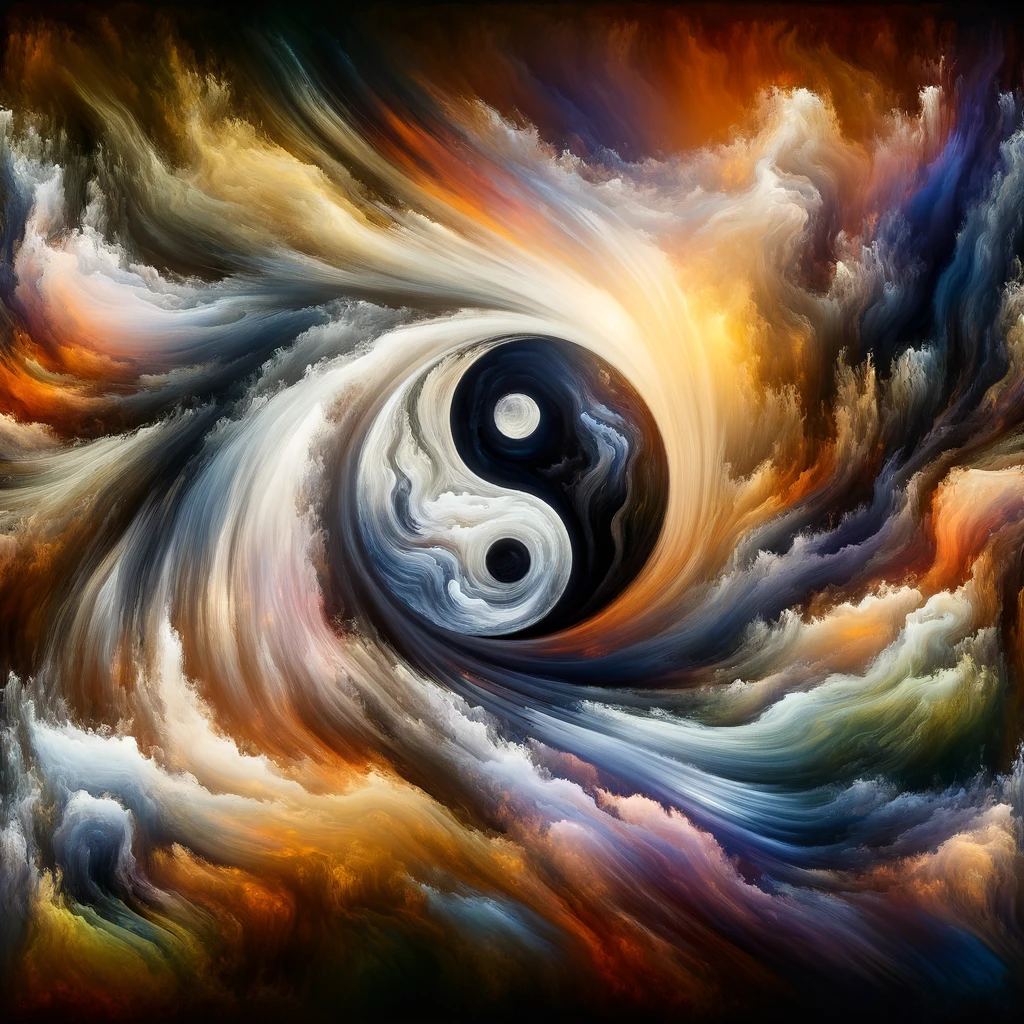As I navigate the complex waters of my personal growth and emotional maturity, one concept that often emerges as both a challenge and a catalyst for some sort of awakening is navigating through the emotions of experiencing cognitive dissonance1 (a theory that states conflicting beliefs and behaviors can lead to a feeling of discomfort). According to the foundational work of Leon Festinger on cognitive dissonance theory, recognizing this emotion can trigger individuals to seek consistency among their beliefs and perceptions. So in an effort to reduce the feeling of discomfort (dissonance), people typically engage in three main types of behavioral options.
We either:
-
Change our behavior or beliefs to align with one another, often adjusting actions or attitudes to reduce conflict
-
Justify, ignore, or deny the dissonance, which involves diminishing the importance of conflicting beliefs or the dissonance itself; or
-
Seek new information that aligns with existing beliefs or actions to justify or rationalize the dissonance.
Recognizing cognitive dissonance within myself is akin to glimpsing a fleeting shadow. It’s elusive, yet unmistakably present, and merely identifying it doesn’t immediately pave a clear path aligned with my core values and authentic self. Yet, spotting this inner conflict is just the beginning; deciding what to do next is the real challenge. It feels like standing at a crossroads without a map. Every choice, made or avoided, shapes my reality, underscoring the constant navigation required in aligning with my true self.

Okay, diving back into the main ways we deal with cognitive dissonance - I’m going to share how my own choices to alleviate the feeling of this cognitive dissonance has, undeniably, shaped my current path.
-
Changing our behavior or beliefs to align with one another requires a level of admittance of “wrongness” (for lack of a better word). But truly, doesn’t it? Deciding to alter your beliefs is a humbling process, one that may even elicit a sense of self-destruction of your current identity - destruction of your current self! Some cis-white man has probably started a podcast episode about this concept, instead they call it an “ego death” (insert eye-roll here).
Personal example: Raised in a traditional, Filipino, Catholic setting, I was deeply entrenched in the rituals and beliefs. I went to church every Sunday, youth group every Wednesday night, and even tried to practice Catholicism after moving out of my parent’s house. I bought a “modern-translation” bible and journaled daily, trying so hard to understand the word of the Lord. To my dismay, the more I tried to understand Catholicism, the less the religious narratives held water for me. The more I learned about history, science, astronomy, our entire existence, I became less and less religious. I fell in love with the vastness of it all, the connectivity of us all, the rich history that led us to this point. I fell out of love of the missionary ideas, the human centric ideologies, the male-dominated religions used to control the masses. This journey of discovery led me to fall out of sync with the doctrines I grew up with, sparking a crisis of belief. Was everything I believed in for over 25 years a waste? Was I…wrong? It turns out, yes, and that’s perfectly okay. It was a part of growing, of becoming who I am. I’ve learned to look back with compassion, not judgment, on my journey of self-discovery. Declaring “I’m not religious” became a milestone in embracing my true self. Admitting “wrongness” wasn’t about being incorrect; it was about celebrating my quest for understanding. This acceptance has allowed me to connect with like-minded individuals, enriching my life in ways true to who I am. Imagine, another version of me might have never embarked on this enlightening path, let alone write a blog about it!
-
Justifying, ignoring, or denying the dissonance involves diminishing the importance of conflicting beliefs or the dissonance itself. Although this sounds like the path that those with avoidant attachment types seldom take, it’s not exclusive to avoidants. Selecting this route is merely pausing the discomfort, or lessening the impact, of the dissonance by telling yourself that the conflicting ideologies are not that important. It’s a defese mechanism, really, a way to protect the current understanding of the world and keep your sense of self neatly intact.
Trigger Warning: Domestic Violence
Personal experience: Once upon a time back in my college and early adulthood days, I found myself in a relationship with a very unkind, wounded, and traumatized man. During my time with him, I was also in the process of working to find contentment in myself, gaining self-confidence in my adulthood, learning more about self-love and self-acceptance (I was in therapy)!!! I gave myself daily affirmations, I talked kindly about myself in my head, I understood the importance of self-love, especially when it came to how loving yourself is a key part in your ability to love another. Yet, I was paradoxically with an unkind man, one who used not only their words, but their hands to hurt me. I kept asking myself how I could be in a situation where the basic tenet of self-love wasn’t even mirrored by the person who was meant to cherish me. He always seemed to be on the brink of happiness, pending the resolution of his issues—be it school, work, or financial stability, always chasing what seemed like a fleeting sense of fulfillment. I excused each incident as an anomaly, a deviation from his true character, but the pattern persisted. In my quest to feel loved, even by someone so clearly struggling, I ignored the glaring misalignment between what I was learning about self-worth and the reality of my relationship. This cognitive dissonance— the stark disparity between my understanding of self-love and the toxic dynamics of my then relationship —loomed large, yet I downplayed it, convincing myself that this relationship could affirm my worthiness of love. It took over 7 years, but I eventually confronted this dissonance head-on and chose to leave. This decision marked a critical juncture: either confront my own missteps or deny the validity of the conflicting beliefs. Thankfully, I chose the former. Leaving wasn’t about admitting fault; it was about recognizing that my self-concept, my ego, resisted being proven wrong. By stepping away, I honored the lessons in self-love I’d sidestepped and extended compassion towards my younger self, who yearned to be acknowledged. It wasn’t until I could no longer recognize myself in the relationship that I realized it was time to let go of another layer, drawing me nearer to my true, authentic self.
-
Seeking new information to align with existing beliefs and rationalize dissonance often means looking for evidence that supports our current views, effectively dismissing any contradictory beliefs. This process involves dismissing the conflicting ideas by not recognizing them as true anymore, essentially reinforcing our original beliefs by filtering out opposing information.
Personal experience: During my time in graduate school for exercise physiology, I was deeply entrenched in a traditional, basic science field, valuing tangible outcomes like biomarkers for diseases or metrics indicating health states. This led me to view the field of exercise psychology with a bit of skepticism, dismissing the importance of psychiatric disorders lacking clear biomarkers. I was convinced that the credibility of my field was higher because of its quantifiable results. However, I’ve since had a revelation, recognizing the significance of the nuances in individual experiences, the complexity of identifying psychiatric states, and the intricacies of psychological phenomena in sports. I now appreciate the beauty and interconnectedness of human emotions and psychological states, realizing how narrow-minded it was to judge the validity of a field by the presence of numerical data. It was a humbling lesson in the value of all scientific inquiry, regardless of the directness of its outcomes.
This brings me to a philosophical and metaphorical reflection on cognitive dissonance. Rather than viewing this state as a negative, I can see it as a profound reminder of the duality within me. Like two sides of the same coin, each belief exists because its opposite gives it definition. In the dance of light and shadow, I find the essence of my being, the juxtaposition that defines the whole.
Embracing cognitive dissonance, then, is not about choosing one truth over another but recognizing that my reality is painted in shades of varying colors, beyond just black and white. This duality is not a battle to be won, but a harmony to be achieved. Straddling the middle is not a hurdle but a bridge to my authentic self—a reminder that both realities can exist, and it is within this balance that I find my true path.

Embracing this level of self-awareness and emotional readiness to act in alignment with newly accepted truths is a daunting task. It’s a form of bravery that goes largely unrecognized, as it demands facing my deepest fears and insecurities. It’s about being honest with myself in a way that’s raw and unfiltered.
The journey towards my emotional maturity is marked by my ability to navigate cognitive dissonance with grace and courage. It involves recognizing my internal conflicts, understanding the choices they present, and making decisions that align more closely with my authentic self. This process isn’t just about growth; it’s a profound transformation—one that requires patience, self-compassion, and an unyielding commitment to self-discovery.
So, here’s to my journey, the missteps, the victories, and everything in between. May I find the strength to confront my cognitive dissonances and emerge on the other side more aligned, aware, and authentically myself.
A thought-experiment for my readers
As you navigate the complexities of cognitive dissonance, I invite you to reflect:
Are you actively engaging with this internal conflict, or is the journey to discovering your authentic self the first step you’ve yet to take?
Let this post serve as a reminder that whichever path you choose, it should resonate deeply with what truly matters to you. Once you’ve aligned with your path, dare to delve deeper into the ‘why’
Why are these values significant to you, and do they truly define who you are?
Intriguing, isn’t it?
References
1
Cognitive Dissonance Theory, conceptualized by Festinger in 1957, is foundational in understanding how conflicting beliefs and behaviors can lead to discomfort, motivating individuals to seek consistency. This discomfort, or dissonance, arises when there’s a mismatch between our actions and attitudes, pushing us towards changing our beliefs or behaviors to reduce the dissonance. Over decades, despite its significant impact across various fields, Cognitive Dissonance Theory has faced criticisms, especially regarding its operationalization and the methodology underpinning the theory. These critiques emphasize the need for clearer conceptualization and more robust operational tools to advance and refine the understanding of cognitive dissonance (Frontiers in Psychology, 2019).
Lay definition: It’s that weird, guilty feeling when what you do clashes with what you believe in, pushing you to either change your actions or your mindset to get that inner peace back. Basically, it’s the mental gymnastics your brain does to keep your self-image cool and consistent.
